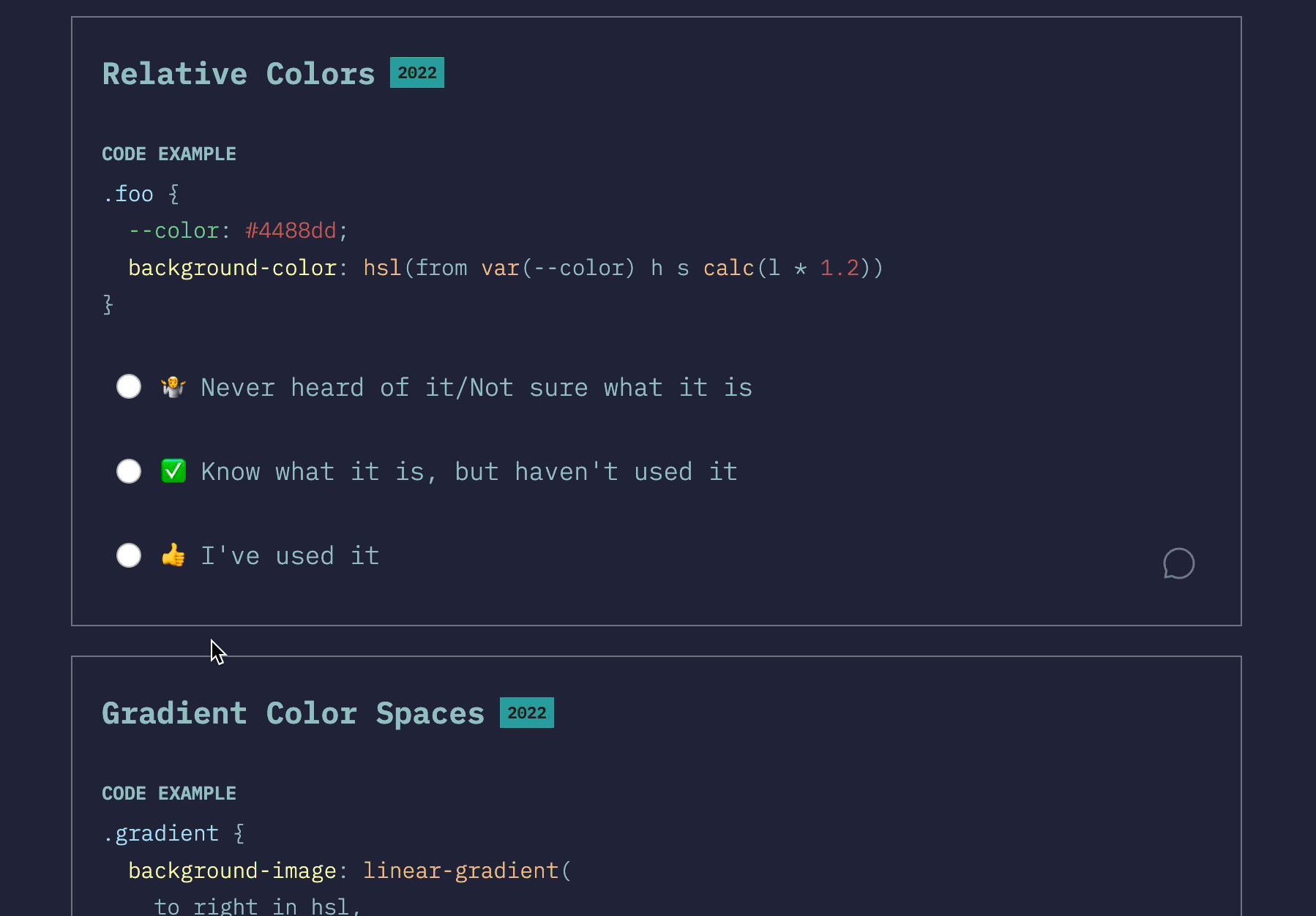Today I mourn. What am I mourning? Encapsulation. At least in my projects.
As a library author, I’ve decided to avoid private class fields from now on and gradually refactor them out of my existing libraries.
Why did I make such a drastic decision?
It all started a few days ago, when I was building a Vue 3 app that used Color.js Color objects. For context, Vue 3 uses proxies to implement its reactivity system, just like Mavo did back in 2016 (the first one to do so as far as I’m aware). I was getting several errors and upon tracking them down I had a very sad realization: instances of classes that use private fields cannot be proxied.
I will let that sink in for a bit. Private fields, proxies, pick one, you can’t have both. Here is a reduced testcase illustrating the problem.

Basically, because a Proxy creates a different object, it breaks both strict equality (obj1 === obj2), as well as private properties. MDN even has a whole section on this. Unfortunately, the workaround proposed is no help when proxies are used to implement reactivity, so when I tried to report this as a Vue bug, it was (rightly) closed as wontfix. It would not be possible to fix this in Mavo either, for the same reason.
I joined TC39 fairly recently, so I was not aware of the background when proxies or private class fields were designed. Several fellow TC39 members filled me in on the discussions from back then. A lot of the background is in this super long thread, some interesting tl;drs as replies to my tweet:
After a lot of back and forth, I decided I cannot justify using private properties going forwards. The tradeoff is simply not worth it. There is no real workaround for proxy-ability, whereas for private fields there is always private-by-convention. Does it suck? Absolutely. However, a sucky workaround is better than a nonexistent workaround.
Also, I control the internal implementation of my classes, whereas proxying happens by other parties. As a library user, it must be incredibly confusing to have to deal with errors about access to private fields in a class you did not write.
This was one of the saddest PRs I have ever written https://github.com/LeaVerou/color.js/pull/306. It feels like such a huge step backwards. I’ve waited years for private fields to be supported everywhere and relished when they got there. I was among the first library authors to adopt them in library code, before a lot of tooling even parsed them properly (and some still don’t).
Sure, they were kind of annoying to use (you usually want protected, i.e. visible to subclasses, not actually private), but they were better than nothing. I was not joking in the first paragraph; I am literally grieving.
I may still use private fields on a case by case basis, where I cannot imagine objects being proxied being very useful, for example in web components. But from now on I will not reach to them without thought, like I have been for the past couple of years.









